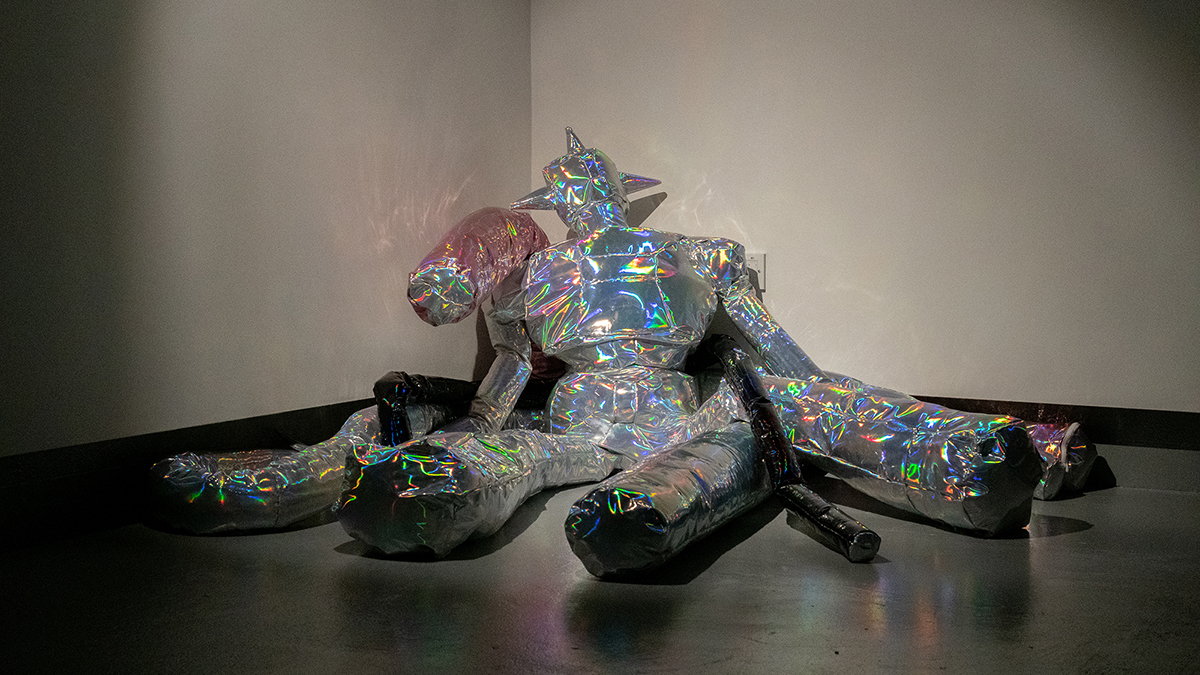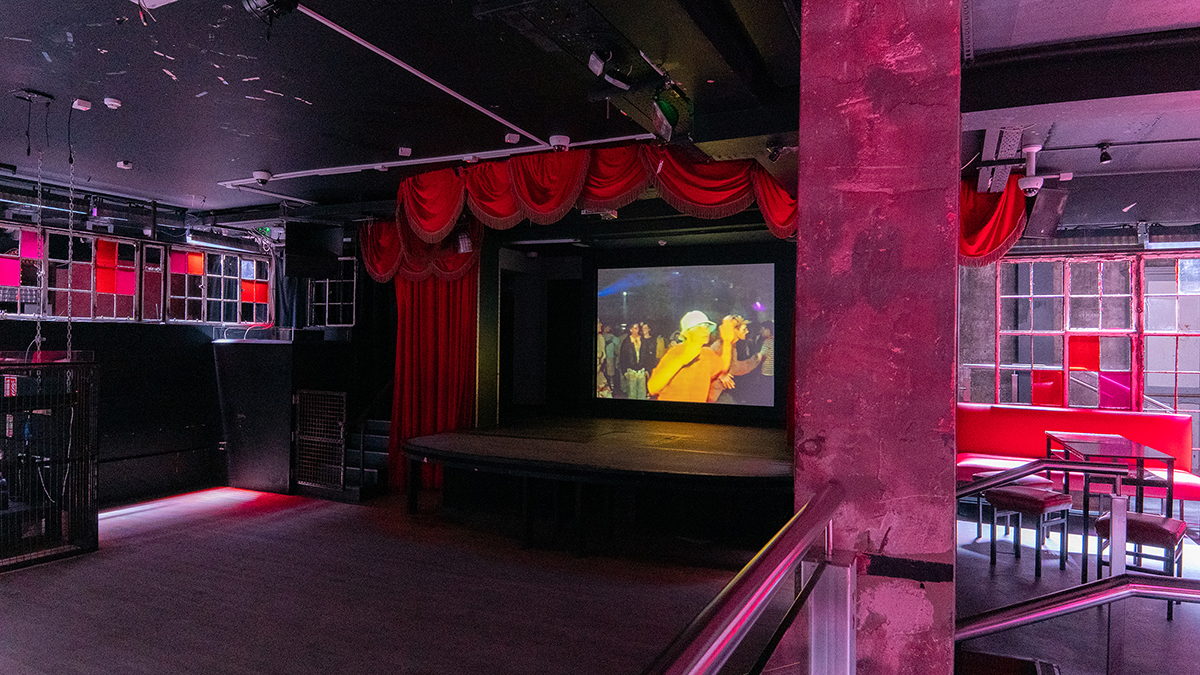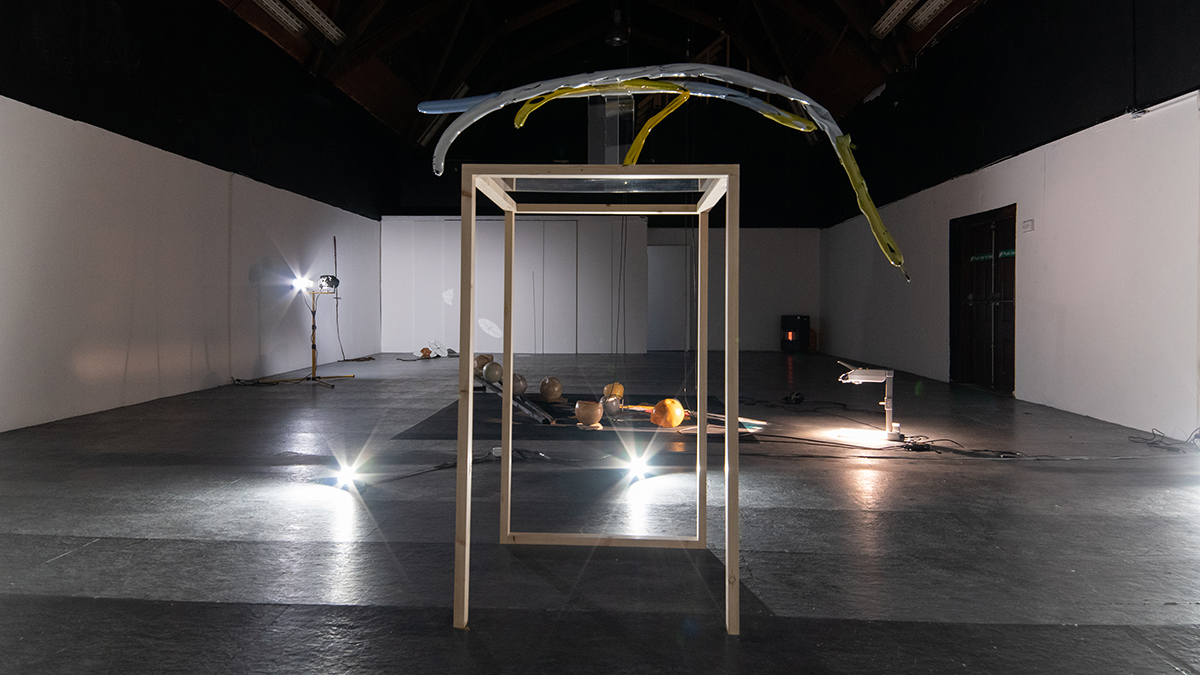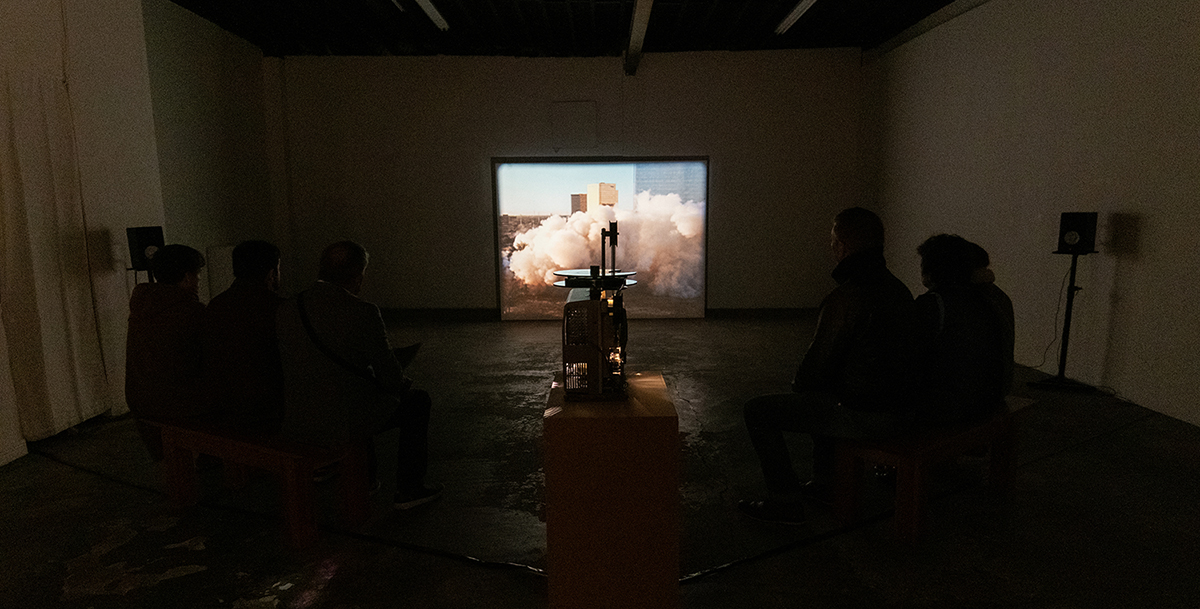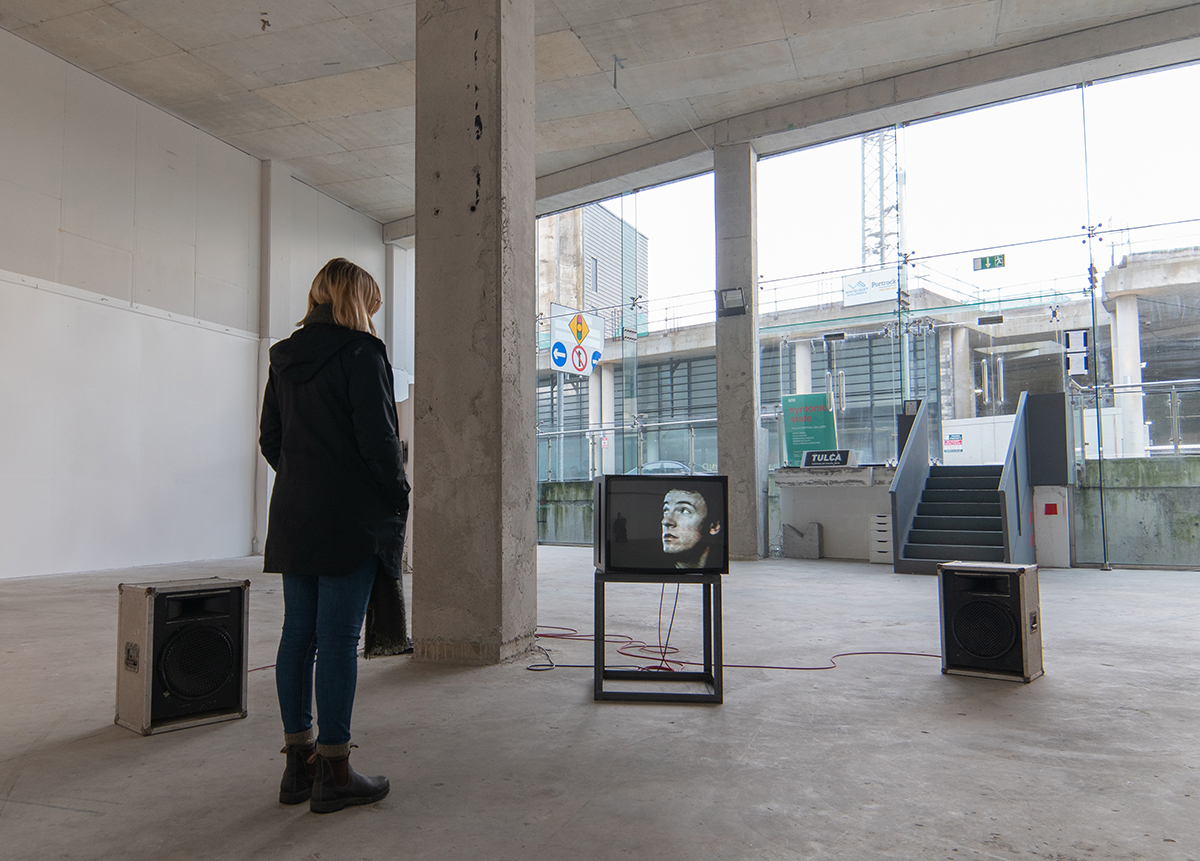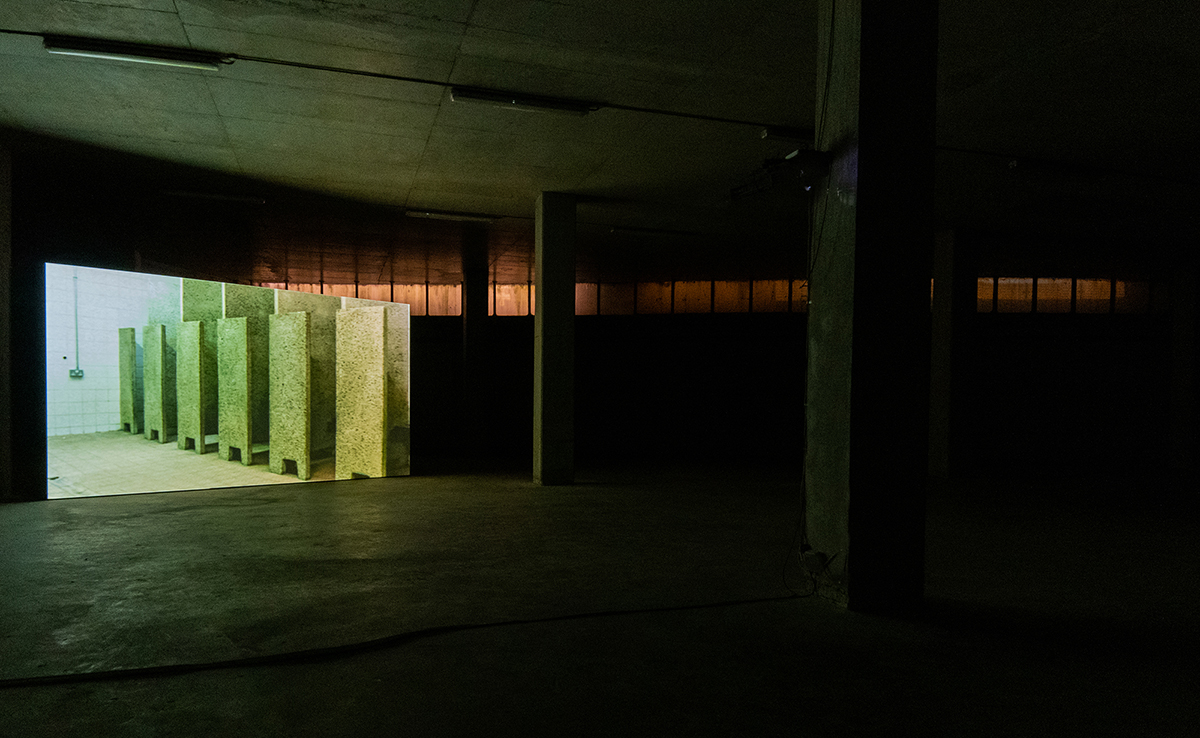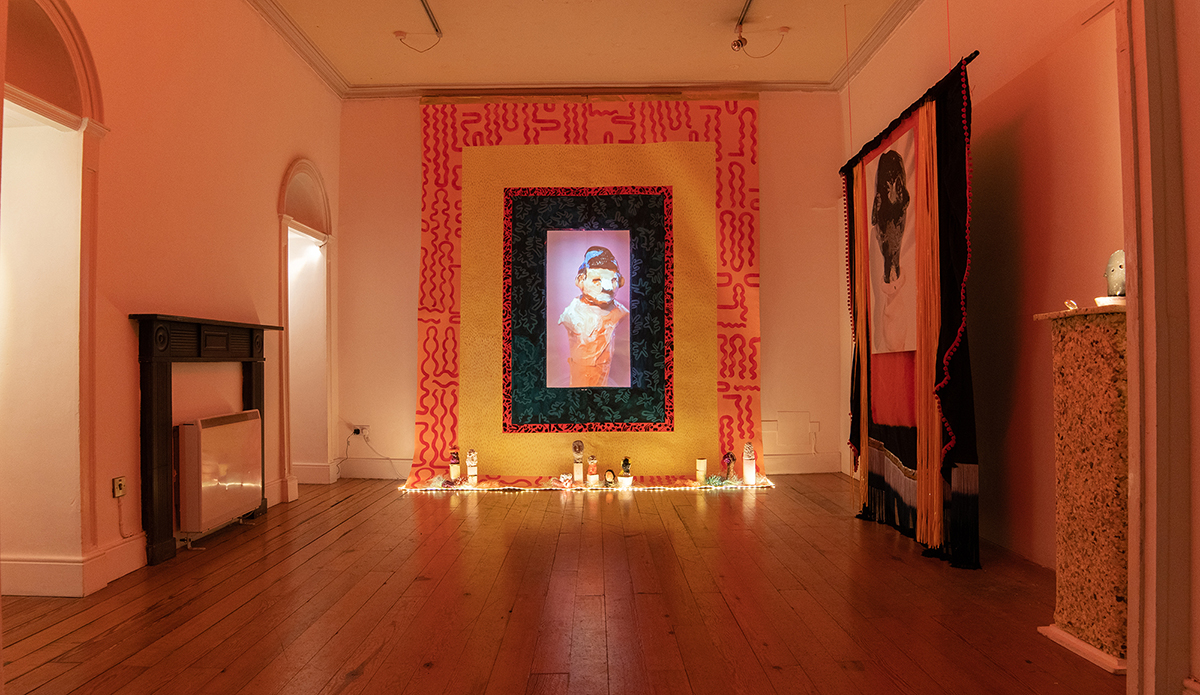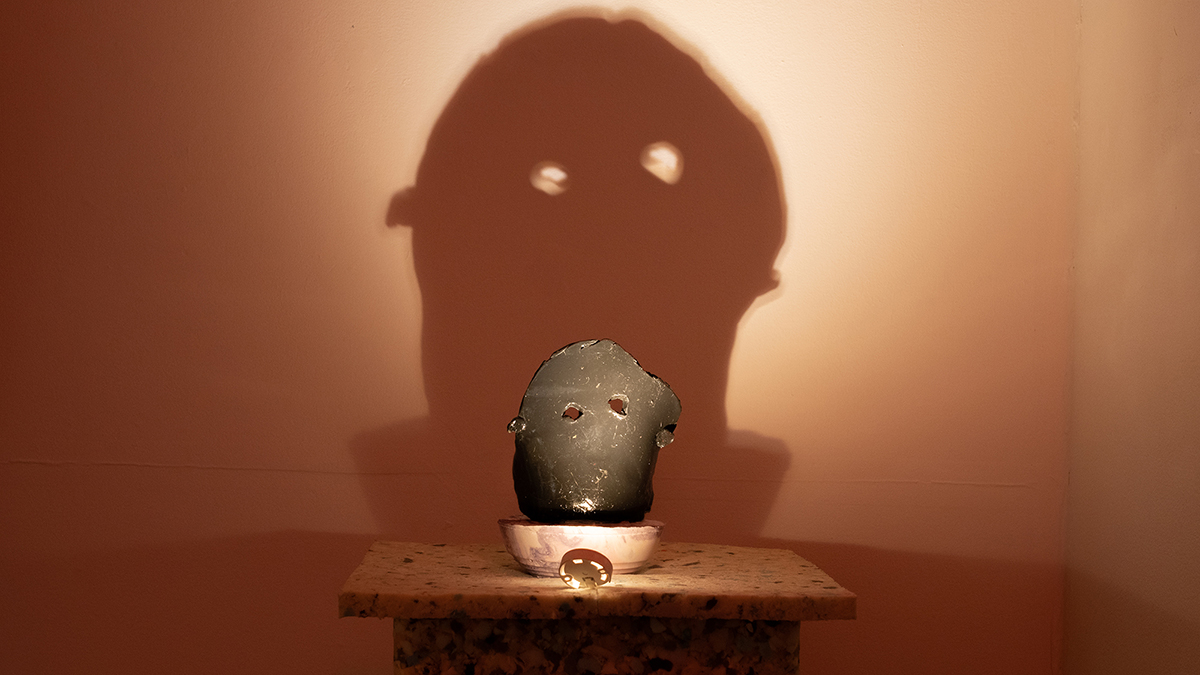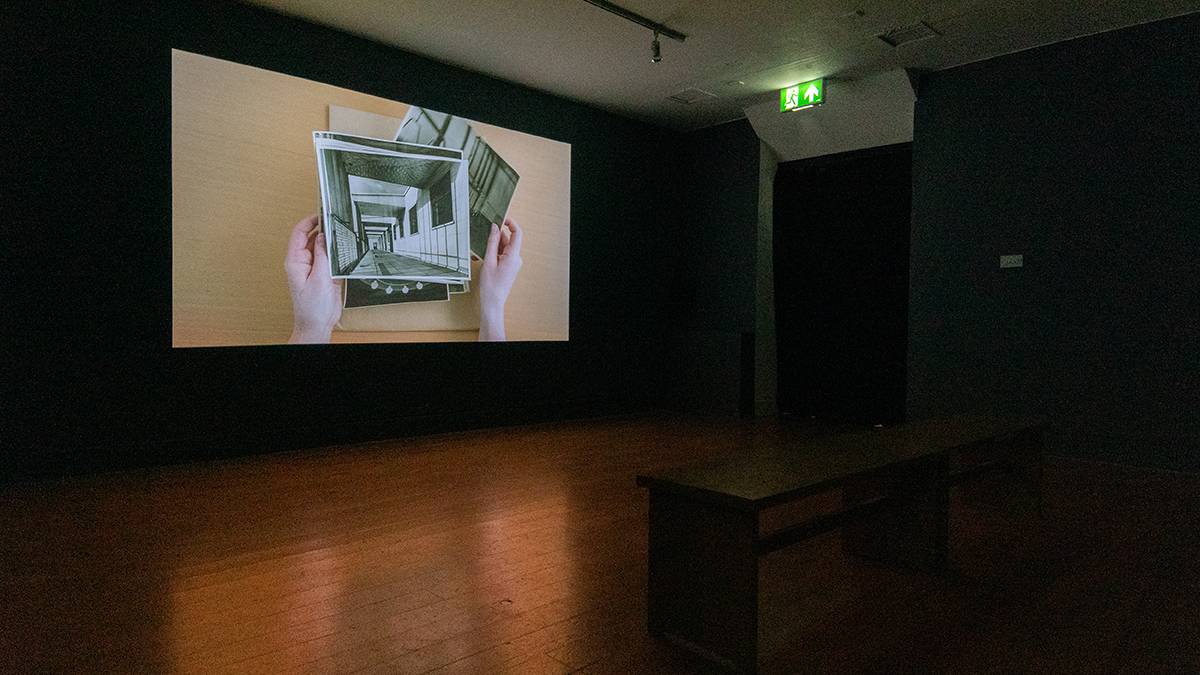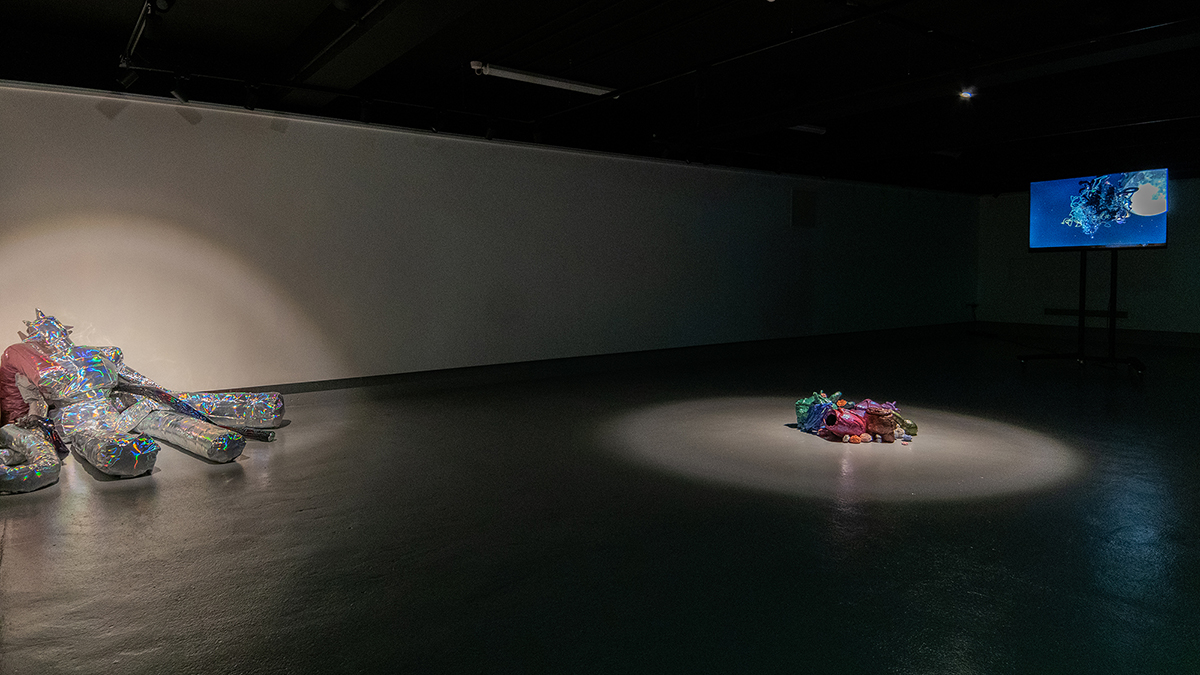TULCA, Syntonic State,
Galway City, November 2 – 18 Nov 2018
Curated by Linda Shevlin.
The syntonic state of TULCA is dispersed over seven venues, drifting through Galway City, from the Columban Hall to a 70’s bungalow (the location of the 126 Gallery). The technology of the contemporary art exhibition frames this meander through the elements lashed Atlantic coastal city. This local context is the ground on which the various manifestations of the show appear. We attempt to read these materialisations in relation to each other – what is the story that can be read in our journey, part flâneur, and part down-at-heel detective?
Filmed documentation of the opening event of TULCA, Aoibheann Greenan’s The Life of Riley, a commissioned procession through the streets of Galway, is shown at the Fishery Watchtower. John Riley was an Irish emigrant who changed sides in the 1847 American War of Intervention. He became part of the San Patricios, a battalion of Irish and Polish soldiers who fought for Mexico. I was momentarily excited by this turncoat until I discovered it was his Catholic religion, as opposed to his anti-imperialist sentiments, which prompted him to change sides. There is also a pamphlet available with the lyrics to the song composed for the event. The story is the important aspect of this work, bringing out a little known incident of history with a local aspect (Riley being from Clifden) which has a resonance with the present moment and the continued tensions around the relations between the US and Mexico. The format of the street procession is a way to involve people who might not visit a gallery, it also echoes other marches and street protests, a form where ‘the people’ can make their voices heard, a possession of public space as a means of demanding attention. Costumes and props from this event are displayed at the main Festival Gallery, positioned to be seen from the street, through glass.
A syntonic state is described in the catalogue accompanying the show as a way of being which is in harmony with the surrounding environment. What would it mean to be in sync with our contemporary world of precariousness, of global warming, of species extinction, of refugees fleeing, of impending doom? The phrase is mentioned in Ciara O’ Kelly’s video Procedures for a Prosperous Ecology (2018). This piece mimics stylistically a kind of vaguely narcotic corporate film, a novocained brand promotion. Something is being sold; perhaps a way to be in the world, fluid, seamless and sedated.
Another major reference point in the constellation of Syntonic State is Mark Leckey’s video Fiorucci Made Me Hardcore (1999). “Halston, Gucci, Fiorucci. He looks like a still, that man is dressed to kill.’’[1] I have a vague memory of seeing this video before; I remembered the dance floor but not the footage of grey, concrete inner city English life, which could easily be lifted from an Alan Clark film. Gritty realism, juxtaposed with dance floor abandon. Fiorucci was installed in the Electric nightclub venue in Galway, a perfect setting for this video. The piece is resolutely low tech, compiled from analogue footage, often including the time-code, from various clubs and dance floors. It has a woozy quality; the footage is not synced to the soundtrack so the dancers are often out of time with the music. The soundtrack is interspersed with the call and response of the music hall – a hectoring, manic insistence on enjoyment. The film attempts to capture both the euphoria of being lost in music as a collective body on the dance floor and the hallucinatory, paranoiac state of too much drugs, ecstasy’s oceanic womb tripping over into being pinned by the eye of the other.
Laura Ni Fhlaibhin, Helen Hughes and Rosie O Reilly’s works are displayed at Columban Hall, a former congregational church. The space acts as a stage set waiting to be activated, a terminal beach. Deflated beach balls, petrified balloon sausage dogs. Air-in, air-out, pumped up, sucked out. The materials employed include horsehair, latex, stone, wood, wax, leather and mirror. Materials are balanced, hung, propped, leaned, inflated, deflated, painted, stripped and tied. The combination of man-made and natural material is repeated in a number of venues, an allusion to both ancient times and modern plastics. Robert Smithson would seem to be a major influence, teamed with references to pop culture and especially to a 70’s countercultural hippie aesthetic. I have conflated all three artists work together in my mind and remember their work as one installation. This misremembering is encouraged by the exhibition space. Unlike the white cube which functions as a neutral backdrop in which to display individual works, spaces which retain the traces of a former life tend to press more forcibly upon the work prompting other connotations.
Cyprien Gaillard’s Cities of Gold and Mirror (2009) 16mm film is shown in the 126 Gallery space that occupies a bungalow. The darkened space entered after walking through the lashing rain acts as a strange and atmospheric environment in which to watch these assorted scenes – young adults dressed in bikinis and shorts, ‘spring breakers’, engage in drinking games; a man in a red jumpsuit and face mask executes a strange undulating dance with ancient Mayan ruins as a backdrop; a mirrored office block explodes through controlled demolition; a night club lighting show; dolphins frolicking in golden water. The ancient deployed as a stage for leisure, hedonism and cod spiritualism. The soundtrack is a futuristic synth scape from the 80’s, progressing prettily even ecstatically until near the end of each scene when the mood shifts, a note changes the atmosphere to something unsettling, dark. Again there is a compression of different times: the ancient and the modern all manifested in a banal private domestic space which has been opened to a roving public by art, now a strain of the tourism and heritage industry. The clip of the controlled demolition of the huge mirrored building is especially resonant. The shimmering of the mirrored façade caused by internal explosions, approximate the moment a digital image disintegrates into pixels, the medium appearing to signal the impending collapse, a rupture in the field of representation. All these scenes are shot in Cancún, a tourist resort developed by the Mexican government in the 1970’s. The capitalist cycle of creation and destruction works at top speed here.
The evocative pull of cheap pop music is also present in Dennis McNulty’s David (Timefeel) (2018), installed in the TULCA Festival Gallery. This is a work that I would describe as romantic conceptualism. It is formally tight and sparse, comprised of an old, solidly three-dimensional TV monitor placed on a wooden frame, speakers, the various cables trailing on the floor (a trope that is found in a number of artists’ works). A short appropriated video loop plays on the monitor, a clip cut and spliced from the video of I’m on Fire by Bruce Springsteen from the LP Born in the USA (1984). All the romanticism is gleaned from the close-up of Bruce’s face, slowly moving, his eyes turned upwards, a look familiar from religious paintings. It brings to mind the close-ups in Carl Dreyer’s 1928 film The Passion of Joan of Arc, a beautiful face turned heavenward. The song is extended over time, looped, dragged out. The sound seeps into and contaminates the gallery space, subtly affecting the other work, producing a feeling of melancholy.
Colin Martin’s series of small-scale oil on canvas paintings collectively entitled Empathy Lab (2018) depict subjects with a relation to technology, surveillance or an uncanny doubling of some kind as in Child Actor 11, Robot. The style is representational but pared back; the colours washed out, reminiscent of both Luc Tuysman’s paintings and Thomas Demand’s photographs.
In the basement space, Jesse Jones’ four minute film, Zarathustra (2008) has been installed: a camera slowly pans over and moves through an abandoned space, a municipal swimming pool condemned to demolition. The camera travels to the source of the soundtrack, the drained swimming pool where a youth brass band warm up and play the opening to Richard Strauss’ tone poem. The youth of the musicians and the dereliction of the surroundings work to puncture the pomposity of the music. The location where the piece was shot and where it is projected resonate with each other: the Fairgreen House unable to actualize its destiny as a ‘high profile commercial unit’ and the public swimming pool condemned as part of the Ballymun regeneration project – both buildings turned over for a period to the production and exhibition of art.
Eleanor McCaughey’s installation The Blood-dimmed tide is loosed (2018) at the Galway Arts Centre is comprised of paintings, textile wall hangings, small sculptural pieces, sound and video. The main focus is a large textile backdrop painted with different patterns reminiscent of Matisse, on which the film of a slowly revolving, rudimentarily constructed figurine is projected. On the floor are various figures made from clay that evoke prehistoric statues. It alludes to homemade altars, a combination of hyper-kitsch, glitter, Lurex and the ancient. It invites interpretation of the relations between the parts but repels understanding. A mask-like artefact/sculpture is placed on a plinth. From a distance the plinth appears to be made of stone but up close it is revealed to be marbled foam. Paintings of the mask and another indeterminate shape are positioned on the opposing wall. This work hints at the infinite proliferation possible from the fetish object when raised in significance by the frame of art.
Gavin Murphy’s essay film Double Movement (2017) is also installed at the Galway Arts Centre. It is a presentation of research that the artist conducted into Busáras in Dublin. This building was constructed in the 1940’s in a modernist style. The film opens with a spinning top and quotes the philosopher Roland Barthes referring to the romance of architecture: “architecture is always dream and function, expression of a utopia and instrument of a convenience” (i.e. architecture’s double movement). Murphy uses the device of an actor leafing through documents to present the information. A voice-over relays different fragments of narrative by participants in the project. This history clearly contrasts with today, as the idea that the state would invest in the construction of a public building with the highest quality materials and most innovative design is simply preposterous. There was a utopian element in the big public construction projects of the post-war era, during what has been called the ‘Golden Thirty’. This loss of the idea of a better future (or any future) is alluded to throughout Syntonic State. There is a nostalgia displayed for ideas of collectivism, which are located in the pop culture of the recent past. ‘Living for the weekend’ is not even seen as an option now.
Bassam Al-Sabah shows work at the NUIG Gallery. Wandering wandering with a sun on my back (2018) is the centrepiece, a 15-minute animated film. The tone of the film is existential, contrasting with the pretty hued computer generated visuals. A solitary individual seemingly alone in a world gives voice to feelings of great angst. The word “I” is repeated throughout the piece – ‘’I shivered away in the night”; “In front of the sun I fully exist”; ”I fortify my body morphing with the crystalized object”; “I relive my live over and over again’’: “But what if I burn with this already scorched earth’’. Objects pulsate, morph and melt into each other. You Pull Out Swords From All Over Your Body (2018) is a sculptural piece, a small painted Manga clay figure lies on the floor, surrounded by detritus. Expansion Pack (2018) lies slumped in a corner, a largish figure made from holographic leather, the light bounces and refracts off the reflective surface. This space suit could have encased the figure on the floor in the fantasy narrative that is easily constructed around the artefacts. The exhausted character, perhaps a space traveller who has run out of air and is waiting to die.
Walter Benjamin proposed the constellation as a way to think through the relation of ideas to objects. Ideas are no more present in the world than constellations in the skies, but like constellations they enable us to perceive relations between objects. The various artworks exhibited can be reflected on as individual objects but are more generative when read in relation to each other and their local and international context. There is a direct engagement with materials, no grand claims are put forward, elements are taken from commodity culture repurposed and recycled as a means of investigating the state we are in.
